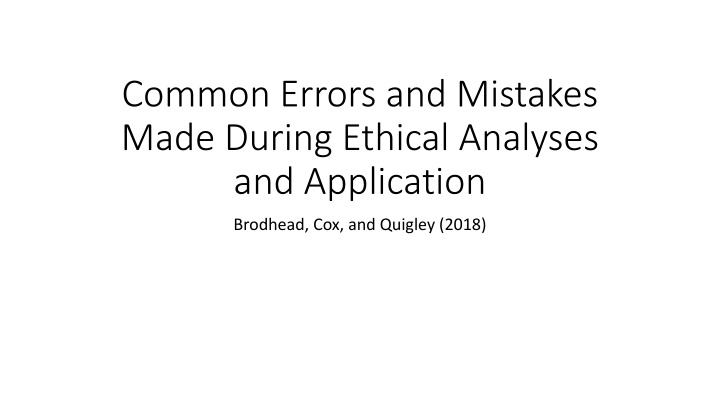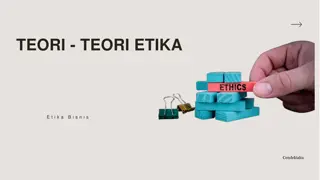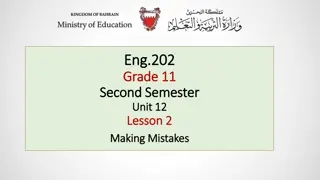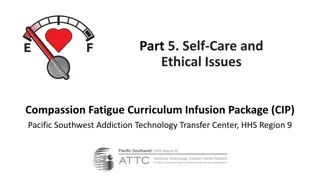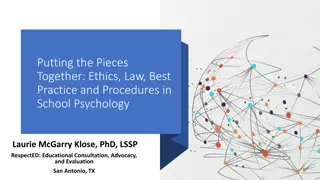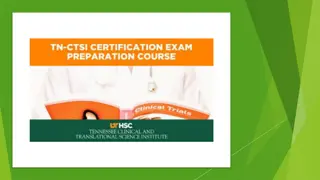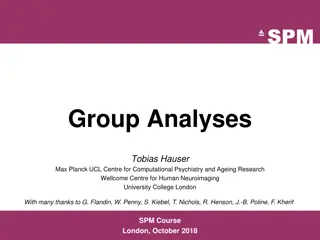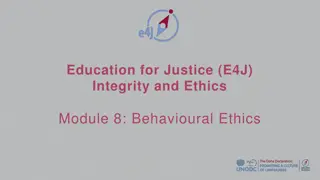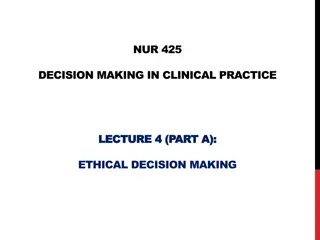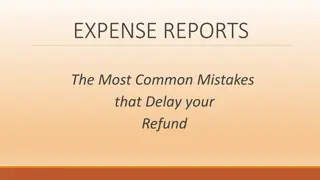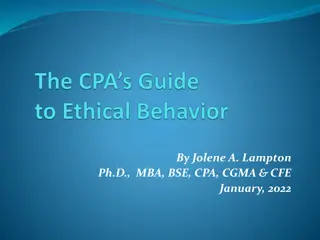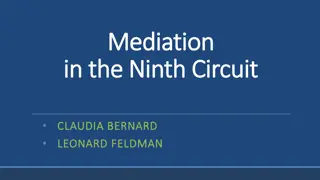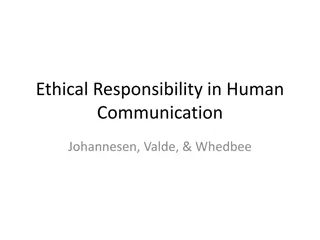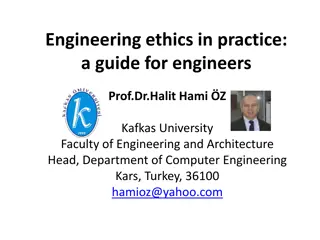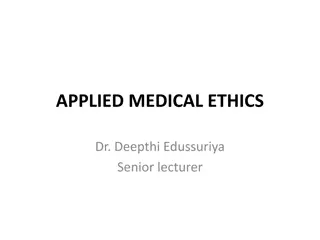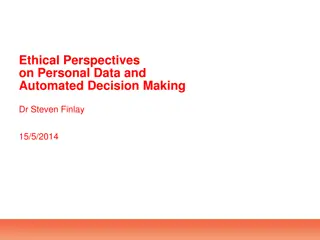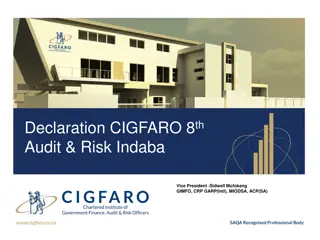Common Mistakes in Ethical Analyses: A Guide
The article discusses common errors in ethical analyses and applications, including wrongful appeals to authority, incomplete analyses, and the importance of consulting with professionals. It highlights instances where decisions may be based solely on others' opinions without thorough assessment, emphasizing the need for objective data and comprehensive evaluation in ethical decision-making processes.
Download Presentation

Please find below an Image/Link to download the presentation.
The content on the website is provided AS IS for your information and personal use only. It may not be sold, licensed, or shared on other websites without obtaining consent from the author.If you encounter any issues during the download, it is possible that the publisher has removed the file from their server.
You are allowed to download the files provided on this website for personal or commercial use, subject to the condition that they are used lawfully. All files are the property of their respective owners.
The content on the website is provided AS IS for your information and personal use only. It may not be sold, licensed, or shared on other websites without obtaining consent from the author.
E N D
Presentation Transcript
Common Errors and Mistakes Made During Ethical Analyses and Application Brodhead, Cox, and Quigley (2018)
Chapter Overview Wrongful appeals to authority Incomplete analyses Multiple relationships run afoul Death by PowerPoint
Common Errors and Mistakes Appeals to authority are when the only evidence for a claim is that someone else agrees with you I heard Pete state that using the bathroom in a client s home is unethical In Pete s blog post he said it is unethical not to conduct a functional analysis
Common Errors and Mistakes The examples provided do account for the specific context in which one is a making a decision I heard Pete state that using the bathroom in a client s home is unethical The behavior analyst is in the home for a four-hour period providing services. It is unreasonable to think someone should not use the restroom during this period of time. In Pete s blog post he said it is unethical not to conduct a functional analysis Functional analyses are only one method of assessing behavior. Other assessments procedures may yield sufficient information for treatment development.
Common Errors and Mistakes Consulting with other professionals is a worthy endeavor when faced with ethical dilemmas. Advice from other professionals, is advice Consultations with credentialing bodies (e.g., BACB, state licensure board) should not be considered mere advice
Common Errors and Mistakes Wrongful appeals to authority arise when the authority does not have objective data to provide guidance No advice should be followed blindly
Common Errors and Mistakes Follow any social media request for information about an ethical dilemma. If the first response is not, It depends, tell me more about X and Y, then an incomplete analysis has occurred. Ethical dilemmas have multiple facets that require discussion and determine of importance. Each facet might be viewed differently by each party based upon his / her ethical philosophy. Ethical decision-making processes are multi-step to facilitate information gathering for development of solutions.
Common Errors and Mistakes Multiple relationship More than one type of relationship with a client or caregiver Relationship #1 The individual Therapist Member of the same church Relationship #2 The immediate family Soccer coach for the individual s sister Relationship #3 Extended family Bandmate of the father s brother
Common Errors and Mistakes Multiple relationships create a context to behavior differently than if the multiple relationships did not exist Many professional organizations have adopted explicit guidelines to prevent and handle multiple relationships Code 1.06d
Common Errors and Mistakes Although Code 1.06d creates clarity, is also removes room for interpretation Black and white guidelines may place professionals at risk for undeserved sanctions and may potentially harm patients themselves by frightening the professional into rigidity in therapeutic interactions (Gutheil & Gabbard, 1998, p. 409)
Common Errors and Mistakes Black and white rules may create conflict with other rules Consideration of cultural practices (Code 1.05c, d, e), and reported benefits, may be impaired by restrictions of accepting gifts (Code 1.06d) Behavior analysts are concerned with offending clients by refusing small tokens of appreciation (Witts, Brodhead, Adlington, & Barron, 2018)
Common Errors and Mistakes Poor outcomes from multiple relationships are real A parent became disgruntled when a behavior analyst did not agree with their point of view during a planning meeting. The parent asked why the behavior analyst accepted their gifts if they did not have their back during the meeting. The gift giving and acceptance led to inappropriate expectations. A parent was upset that a behavior analyst would not give them a ride to the store. It is on the way to the office, and the behavior analyst had just eaten their food.
Common Errors and Mistakes Multiple relationships can be bad, and can be avoided Not all multiple relationships are bad Do what is in the best interest of the client
Common Errors and Mistakes Lectures, supported by PowerPoints, with a verbatim review of the Code is not helpful It is boring Expand the stimulus and response class for ethics learning Focus on aspects problem solving processes for ethical dilemmas
